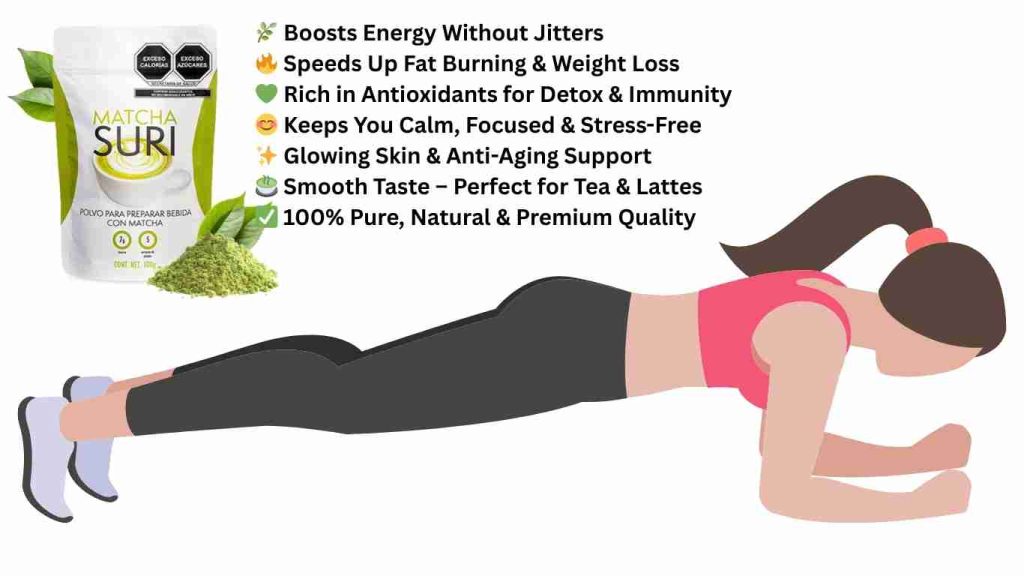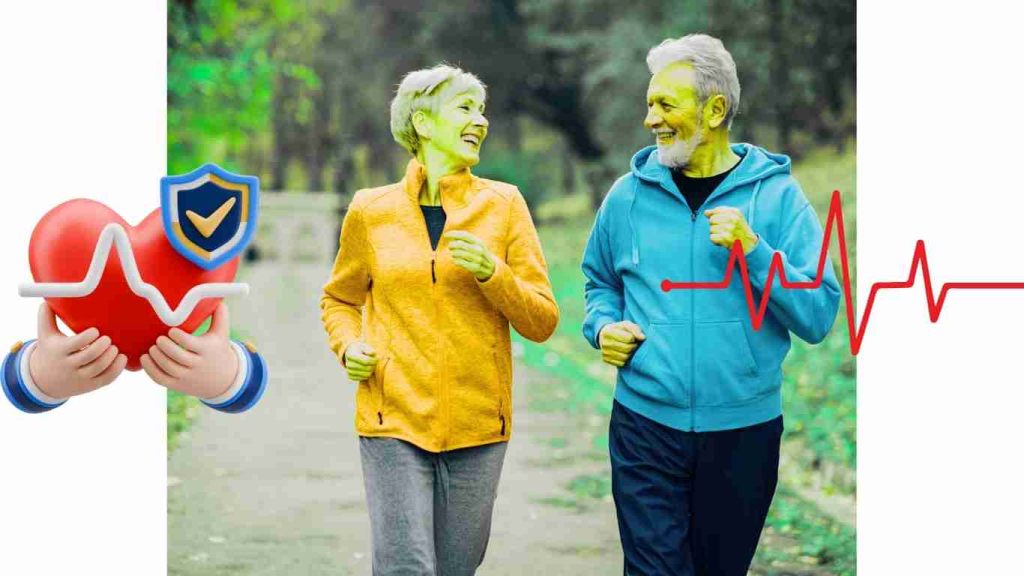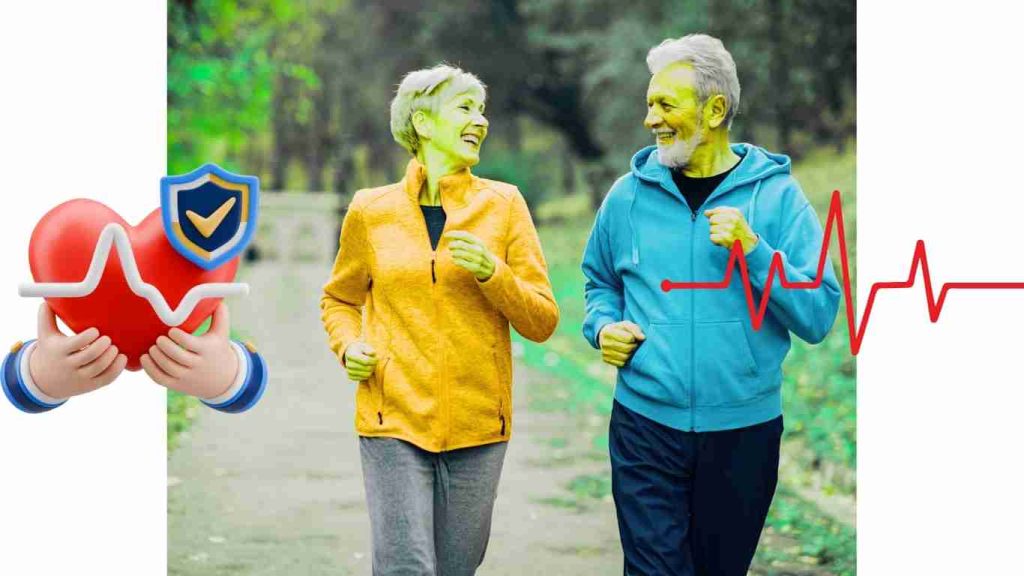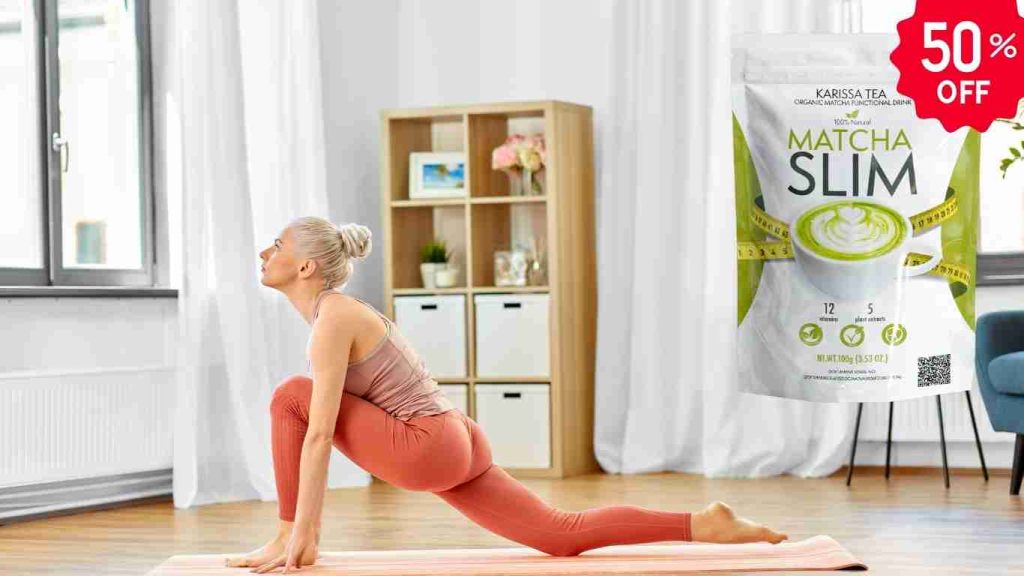Low-impact workouts at home for beginners offer a gentle yet effective way to begin a fitness routine. By avoiding high-impact movements (like jumping), these exercises reduce stress on the joints while still providing a challenging workout. This makes them ideal if you’re just starting out or have conditions like knee pain. In fact, only about 47% of U.S. adults meet federal exercise guidelines, so easy home routines can help more people stay active. Whether you’re overweight, have bad knees, or simply new to fitness, this guide will walk you through beginner-friendly exercises and tips to safely build strength and burn fat at home.
Woman resting on an exercise ball for a low-impact home workout
Using support tools like a stability ball, chair, or countertop can make movements easier for beginners. For example, a stability ball cushions your back during glute bridges, reducing strain on the spine. Such props allow you to work core and leg muscles gently. Research shows even short sessions (5–10 minutes) improve health, so start slow. As you progress, low-impact moves will help you safely boost endurance, strength, and flexibility.
Benefits of Low-Impact Home Workouts
Low-impact exercises minimize force on the knees, hips, and back, making them particularly joint-friendly. This is crucial for beginners or people with arthritis. For example, Healthline explains that low-impact workouts “reduce stress on your joints” and are good for those new to working out or with joint pain. Other key benefits include:
- Joint Safety: These workouts avoid high-impact stresses. A 2018 study even found that exercise therapy often yields better outcomes for arthritic knees than surgery or medications.
- Fat Burning: Despite being gentle, many low-impact routines burn calories effectively. Verywell Health notes that “low-impact exercises… will still burn fat and get your heart pumping without stressing your knees”. In other words, activities like brisk walking or cycling become fat-burning low-impact workouts when done steadily.
- Beginner-Friendly: Simple motions (like marching in place or chair exercises) are easy to learn. Medical News Today lists moves such as trunk rotations, sit-to-stands, arm raises, and marching as accessible beginner exercises. These “easy exercises at home for overweight beginners” and newcomers allow you to build fitness without intimidation.
- Full-Body Conditioning: Many low-impact moves engage multiple muscle groups. For instance, walking works legs and glutes, while rowing or swimming involves the whole body. Over time this improves overall fitness, circulation, and lung capacity.
- Mental Wellbeing: Regular exercise relieves stress and boosts mood. Even walking outdoors can uplift spirits. Starting a manageable at-home routine builds confidence and motivation.
In short, low-impact workouts provide safe workout for bad knees and sensitive joints while still improving health. They’re a smart choice if you need gentler routines that are no jump workouts for beginners – meaning your feet stay on (or near) the ground at all times.
Setting Up for Success
Create a comfortable home gym space before you begin. Wear supportive shoes, ensure the floor is clear of obstacles, and have a sturdy chair or countertop nearby for support. A yoga mat can cushion your knees and hands.
Warm Up & Get Started: Always begin with a brief warm-up (3–5 minutes). Try marching in place, gentle leg swings, or arm circles to loosen muscles. Remember, even a few minutes counts. A 2017 study found any amount of exercise significantly lowers cardiovascular risk, so start with what you can handle. For example, a 10-minute walk on a flat surface (rather than uphill) is a great beginning. Gradually build up duration or intensity each week.
Gear & Equipment: Special equipment isn’t required. Bodyweight exercises and basic items (a chair, a towel, resistance bands) are enough. As you progress, you can add light dumbbells or ankle weights. However, don’t feel pressured to jump in; truly beginners can get results with zero equipment.
- Medical Advice: If you have any chronic conditions or severe pain, consult a doctor or physical therapist first. They can tailor safe exercises for you.
By preparing properly and following a structured plan, beginners will avoid injury and see steady improvements in fitness.
Low-Impact Cardio Exercises
Cardiovascular (aerobic) workouts get your heart pumping and burn calories, but without the jarring impact of jumping. Here are some effective low-impact cardio moves to try at home:
- Walking or Marching: March in place or walk around your home. Swing your arms to elevate intensity. This simple exercise increases heart rate safely. As Healthline points out, walking puts far less strain on your knees than running. Aim for a brisk pace for 1–3 minutes, then recover with slower marching.
- Step-Ups: Use a sturdy step or bottom stair. Step up with one foot, then bring the other up, and step back down. Alternate legs. This move works quads and glutes like a stair-stepper machine. It’s low-impact yet effectively raises the heart rate.
- Stationary Cycling: If you have a stationary bike (or recumbent bike), ride at a moderate pace. Cycling is an “intense, low impact exercise” that strengthens legs and burns calories. Studies show indoor cycling improves body composition and cardiovascular health without need for dieting.
- Dancing or Step Aerobics: Put on music and dance in place. Use side steps, grapevines, or step-tap jacks (step wide and tap feet together) instead of jumping jacks. This keeps the routine upbeat and calorie-burning, yet still low-impact. Many people find dancing very motivating.
- Water Aerobics/Swimming: If you have pool access, aqua exercises are ideal. The water’s buoyancy supports your weight, virtually eliminating joint pressure. Leg kicks, water jogging, and arm exercises in water all count as cardio. Even a few laps of gentle swimming can be a fat-burning low-impact workout.
- Elliptical Trainer: If you own an elliptical machine, use it at home. It mimics running without the ground impact. The fluid leg motion protects knees and back.
- Cycling or Recumbent Bike: Similar to above, but a recumbent bike (with back support) can be more comfortable for low-back pain.
- Shadow Boxing: Throw punches in the air while standing. Move your feet lightly to one side and back (no hops). This engages the arms, shoulders, and legs, and elevates heart rate safely.
Each of these exercises forms part of a no jump workout for beginners. That means they raise your heart rate without ever requiring you to jump. As one fitness source notes, you can get a full cardio routine even in a small space using no-jump exercises. Try to accumulate at least 10–30 minutes of such cardio most days. It can be split into shorter bouts if needed (e.g. 10 minutes three times a day).
Strength and Flexibility Moves
Strength training at home builds muscle and improves endurance – and it can be done in a joint-friendly way:
- Sit-to-Stand (Chair Squats): Sit on a firm chair (no armrests). Slowly stand up, then sit back down without using your hands. This mimics a squat safely. It strengthens quads and glutes. Medical News Today specifically recommends this move for beginners. Aim for 8–12 reps, using the chair for balance as needed.
- Wall/Incline Push-Ups: Stand facing a wall or counter. Place hands at shoulder height and walk feet back until arms are slightly angled. Bend elbows and lower chest toward the wall, then push away. This works chest, shoulders, and triceps with minimal stress. Doing push-ups on a chair or a table also keeps your knees safe because you’re not on the floor.
- Glute Bridges: Lie on your back with knees bent and feet flat on the floor. Slowly lift your hips toward the ceiling, squeezing your buttocks and core, then lower back down. Keep movements controlled. This exercise builds core, glutes, and hamstrings gently. Using a mat under your back adds comfort.
- Leg Raises (Seated or Lying): Sitting in a chair, extend one leg forward and hold it level, then lower it. Alternatively, lie on your side and lift the top leg straight up and down. Leg raises strengthen thighs without bending the knee under load, which is knee-friendly.
- Arm Circles and Raises: While sitting or standing, extend your arms to the sides. Make small circles (as if stirring the air) and gradually increase circle size. You can also raise arms forward or overhead and lower them. These moves enhance shoulder mobility and upper-body muscle activation.
- Bodyweight Squats: Stand with feet hip-width. Slowly squat down a few inches (avoiding deep kneeling if knees hurt). Hold onto a chair for support if needed. This builds leg strength; just keep it shallow to protect knees.
- Calf Raises: Hold the back of a chair and rise up onto your toes, then lower. Strengthens calves and improves ankle stability.
- Core Exercises: Try gentle core moves like seated knee lifts (while sitting, lift one knee toward chest), or basic planks on the knees. Pilates-inspired core work (e.g., slow abdominal curls while lying) also increases stability.
- Yoga and Stretching: Incorporate simple yoga poses (like Seated Forward Fold, Cat-Cow on hands and knees, or Tree Pose with support) to improve flexibility and balance. Gentle yoga and Pilates are proven to strengthen muscles without overstressing joints.
When performing strength moves, focus on slow, controlled motions and proper alignment. If standing leg exercises are painful, try them seated or near a wall for balance. The key is consistency: even 5–10 reps of these exercises a few times a day will build up strength over time.
Workouts for Overweight Beginners
If you’re overweight or significantly deconditioned, these tips will help you start safely:
- Begin Slowly: As Medical News Today emphasizes, any movement helps. Even 5–10 minutes of gentle exercise lowers health risks. Don’t push too hard too soon.
- Seated Variations: Many moves can be done sitting. For example, seated marches, heel digs, or seated arm exercises get you moving while reducing joint load. Sit-to-stand exercises (sitting down and standing up from a chair) build leg strength safely. These are quintessential easy exercises at home for overweight beginners.
- Use Support: Stand near a countertop, table, or sturdy chair. Use it for balance during exercises like half-squats or calf raises. Wall push-ups are also great; doing push-ups on a wall instead of the floor reduces intensity.
- Short Sessions: Break workouts into shorter bouts if needed. It’s better to do 2×10-minute sessions than none. Medical News Today notes that even very short workouts can boost fitness if you do them consistently. Increase your time by just a minute or two each session as you improve.
- Avoid High Impact: Skip any jumping or running. Focus on moves where at least one foot is on the floor. For example, do side steps instead of jumping jacks. This approach effectively creates a no jump workout for beginners which raises heart rate safely.
- Chair or Swimming Workouts: If available, chair aerobics classes (even videos online) are excellent. Water workouts (swimming or water aerobics) take all weight off the joints. These are often recommended specifically for people with obesity or arthritis.
- Medical Options: If mobility is very limited, consider physical therapy. A physical therapist can teach you specific low-impact, joint-friendly exercises.
Remember: the goal is to move more, not to be perfect. Even cleaning the house or gentle gardening counts as exercise. As you get stronger, you can gradually progress to standing exercises or longer workouts.

Sample Weekly Plan
A balanced routine mixes cardio, strength, and rest. Here’s an example 7-day plan for a beginner:
- Day 1 – Cardio: 20–30 minutes of brisk walking (or marching in place).
- Day 2 – Strength: Bodyweight routine – sit-to-stands (10 reps), wall push-ups (10 reps), glute bridges (10 reps), arm raises (10 reps each). Repeat once.
- Day 3 – Cardio: 15–20 minutes dancing or stepping (try to keep moving non-stop, with breaks as needed).
- Day 4 – Strength/Core: Core and flexibility – seated leg lifts, seated twists, gentle yoga stretches (Cat-Cow, Child’s Pose). Hold each stretch 15–20 seconds.
- Day 5 – Cardio: Low-impact interval – alternate 1 minute fast marching or stepping with 1 minute slow pace, for a total of 15–20 minutes.
- Day 6 – Active Rest: Go for a leisurely walk or do light household chores. Stretch major muscle groups gently.
- Day 7 – Optional Repeat or Full Rest: You may repeat a favorite workout or take a full rest. Listening to your body is important.
Aim to meet the CDC recommendation of 150 minutes of moderate exercise per week. Spread across the week, that’s about 30 minutes on most days. Beginners can split this into multiple short sessions if that’s easier. Consistency is key; it’s better to do a little each day than a lot once in a while.
Safety Tips and Precautions
- Warm Up/Cool Down: Always begin with a 3–5 minute warm-up (gentle marching, arm swings). End with stretching to prevent stiffness.
- Proper Form: Use slow, controlled movements. Avoid locking joints at end ranges. For example, don’t let your knees cave inward during squats.
- Joint Care: If you have bad knees, choose exercises accordingly. Verywell Health advises that high-impact activities like running or jumping are too stressful for bad knees, but cycling, walking, and water exercise are excellent alternatives. In fact, water aerobics and swimming “take weight off the joints,” making them recommended workouts for people with knee pain. Low-impact machines like ellipticals also “won’t stress your knees” because your feet never leave the pedals.
- Pain Signals: Exercise should never be sharp or stabbing pain. Mild muscle soreness is normal, but stop any move that causes joint pain. Modify or skip it.
- Equipment Check: Ensure any equipment (like a step or chair) is stable and on non-slip surfaces.
- Progress Gradually: Increase repetitions or intensity slowly. For instance, add one more squat or extra 2 minutes to your walk each week. Rushing gains can lead to injury.
- Stay Hydrated: Drink water before, during, and after your workout, even if you’re exercising indoors.
- Consult a Professional: If you have chronic conditions, it’s wise to talk to a doctor or physical therapist. They can provide personalized modifications.
By following these precautions, you can enjoy the benefits of exercise with minimal risk.
Staying Motivated and Tracking Progress
Consistency makes the difference. Here are ways to keep yourself on track and engaged:
- Set Realistic Goals: Instead of “lose 50 pounds,” aim for “walk 15 minutes each morning.” Celebrate each milestone.
- Track Workouts: Keep a log of your exercises (minutes, reps, how you felt). Seeing progress on paper is encouraging.
- Mix It Up: Variety prevents boredom. Alternate walking one day, dancing the next, and strength routines after. Check out beginner workout videos online for inspiration.
- Get Social: Share your journey with friends or family. Invite a buddy to do a workout with you (even virtually). Join an online support group or forum for beginners.
- Use Music or Media: Listen to upbeat music or podcasts while exercising. Watching a favorite TV show while on the stationary bike can make time fly.
- Reward Yourself: Give yourself non-food rewards for consistency, like a new exercise outfit or a relaxing bath.
Most importantly, keep going even if progress feels slow. Improved energy, better sleep, and small fitness gains will follow. Engage readers by inviting them to comment or share: for example, “Let us know which low-impact exercise is your favorite, and feel free to share this guide on social media to help others get moving!”
FAQs (Frequently Asked Questions)
- Q: What are some beginner-friendly low-impact exercises I can do at home?
A: Many exercises fit the bill. Simple examples include marching in place, seated knee lifts, sit-to-stand (chair squats), wall push-ups, and gentle yoga stretches. These moves keep at least one foot on the ground or use support, so they’re gentle on joints. Medical News Today even highlights trunk rotations, arm circles, and marching as easy beginner moves. - Q: Can I lose weight with low-impact workouts?
A: Yes. Steady, moderate exercise still burns calories and fat. Health experts explain that low-impact cardio (like cycling or swimming) will “burn fat and get your heart pumping” as long as you maintain enough intensity. Consistency matters – doing low-impact workouts regularly (and eating well) will support weight loss over time. - Q: How often should I exercise as a beginner?
A: Aim for at least 150 minutes of moderate activity per week, per CDC guidelines. For beginners, that could be 30 minutes on five days, or 15 minutes twice a day. If needed, split it into even shorter sessions (10 minutes) – they all add up. Listen to your body and start with a frequency you can maintain. - Q: Are these workouts good if I’m overweight?
A: Absolutely. Low-impact routines are actually ideal for overweight beginners because they avoid joint-jarring motions. Even very simple movements help. Medical News Today notes that any increase in activity (even 5–10 minute bouts) significantly helps heart health and fitness. Overweight beginners can focus on supported exercises (like seated marches and chair squats) and then slowly add more as comfort grows. - Q: Can I do these exercises if I have bad knees?
A: Yes. In fact, you’re encouraged to do low-impact workouts. You might especially focus on activities like swimming, stationary cycling, and using an elliptical machine – all of which strengthen muscles around the knee without pain. Even simple walking improves blood flow and helps knee stiffness. The key is to avoid jumping or pounding; instead, do controlled movements that don’t aggravate the knee. - Q: Do I need any special equipment?
A: No. Beginners can do almost all of these workouts with no equipment or just household items. A chair, a step, or a wall is enough. Resistance bands or small dumbbells can be added later for more challenge, but they’re not required. Even carrying water bottles as weights or using soup cans works. The focus should be on movement and consistency.
Conclusion
Low-impact workouts at home for beginners provide a safe, accessible path to better health. By focusing on joint-friendly moves like marching, chair squats, and gentle stretches, you can improve cardiovascular fitness and strength without pain. Remember to progress gradually, listen to your body, and keep hydrated. These routines are especially suited to overweight beginners or anyone with knee issues, since they burn calories and build muscle without overloading the joints.
Ready to start your journey? Try a few exercises from this guide today and see how you feel. Share your favorite workouts with friends, and leave a comment below to encourage others. With persistence and the right approach, low-impact home workouts will help you reach your fitness goals safely and sustainably.








